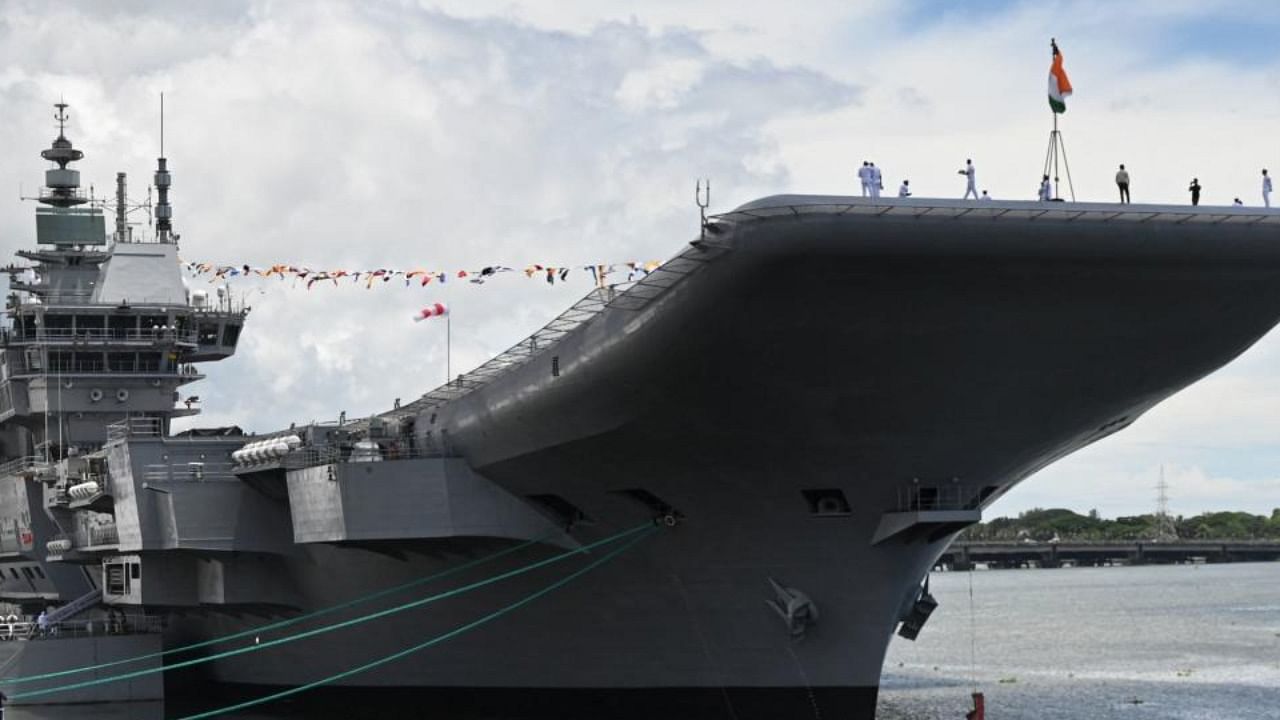
Given the country's expanding strategic interests across the globe, the Indian Navy has been widening its strategic reach and operational horizons. Several recent developments point toward the growing global presence of the Indian Navy and underscore the utility of maritime power in projecting the broadening geopolitical footprint of India.
The Indian Navy had joined the United States (US)-led initiative Combined Maritime Forces (CMF) as an associate member earlier this year. The CMF is a key multi-national maritime security initiative in the Indian Ocean. In September, the Indian Navy's INS Sunayna took part in the capacity-building exercise Operation Southern Readiness conducted by the CMF at Seychelles. The Indian Navy conducted a training lecture on maritime domain awareness.
The geostrategic location of Seychelles has attracted global powers, including China. India's strategic ties with Seychelles are well-known. However, in view of the growing China challenge, joining hands with the US and its allies through the CMF framework to maintain security and stability in the Western Indian Ocean will help both sides.
While the INS Sunayna was sailing in the East African waters, INS Tarkash was deployed in the West African waters for anti-piracy operations in the Gulf of Guinea. The INS Tarkash conducted joint maritime exercises with the Nigerian Navy's patrol ships and made a port call at Port Lagos. These exercises mark the first joint operational deployment by India and Nigeria. Later, it also made a first port call at Port Gentil in Gabon, a resource-rich West African country located along the Gulf of Guinea.
Nigeria is the largest African oil producer and supplies about 8 per cent of India's oil requirements. Therefore, the stability and security in the Gulf of Guinea are directly linked to India's energy security. Nigeria is also a regionally dominant player in West African affairs and is facing multiple security challenges, like the terrorist threat presented by Boko Haram in the north and piracy as well as instability in the south.
Deepening a strategic relationship with Nigeria opens up opportunities for cooperation in counter-terror and counter-piracy operations. As India seeks to export domestically manufactured defence equipment, markets like Nigeria could come in handy. Already, India is eyeing the African arms market through the offer of setting up manufacturing plants for Tejas Mk-1A aircraft and Advanced Light Helicopters in Egypt.
The Indian naval deployments in the Gulf of Guinea are significant not only from the operational point of view (of expanding reach) but also from perspectives of the strategy. China has been in talks with Equatorial Guinea, another coastal state of the Gulf of Guinea, to establish a base. So far, the base has not materialised under US pressure. However, it points towards the global strategic ambitions of China. In this context, regular Indian naval presence in these waters is imperative. India may also perhaps exercise with the US and other friendly European navies in the West African waters.
The intensifying China challenge and the trade, as well as security interests, are pushing India to strengthen its outreach into the South Pacific. India's maritime patrol aircraft P8-I and the INS Satpura participated in the multinational maritime Exercise Kakadu hosted by the Australian Navy. Twenty countries participated in the exercise, including the US and Britain. In the past, P8-I has launched maritime patrols in the Southwest Indian Ocean as well. It indicates the integrated strategic view of the maritime space of the Indo-Pacific.
Building on the growing strategic engagement with the South Pacific, Navy chief Admiral R Hari Kumar paid a visit to New Zealand. During the visit, an agreement for sharing information on white shipping was signed. While discussing the strategic scenario of the South Pacific, the politico-military presence of Australia, the US, and France, along with China, receive the lion's share of attention. However, New Zealand is an important strategic player in the South Pacific, and the navy chief's visit underscores its importance in the region's geopolitics.
The picture that emerges from the Navy's intensifying operational and geographical calendar is that of a force carrying out functions of power projection as well as defence diplomacy. Participation in anti-piracy operations and multi-nation exercises, launching joint patrols, and activities intended for 'showing the flag' is useful in familiarising the Navy with the strategic environment of distant yet interconnected geopolitical theatres. With the growing capabilities and geographic horizons, the expanding global strategic presence of the Indian Navy has become a reality.
(The writer is a strategic analyst based in Delhi.
Disclaimer: The views expressed above are the author's own. They do not necessarily reflect the views of DH.